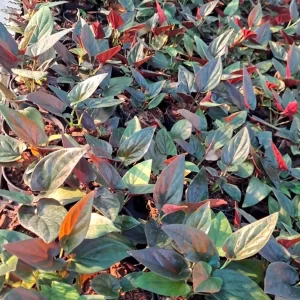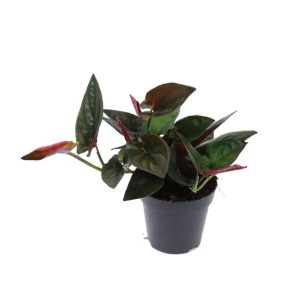- English
- Chinese
- French
- German
- Portuguese
- Spanish
- Russian
- Japanese
- Korean
- Arabic
- Irish
- Greek
- Turkish
- Italian
- Danish
- Romanian
- Indonesian
- Czech
- Afrikaans
- Swedish
- Polish
- Basque
- Catalan
- Esperanto
- Hindi
- Lao
- Albanian
- Amharic
- Armenian
- Azerbaijani
- Belarusian
- Bengali
- Bosnian
- Bulgarian
- Cebuano
- Chichewa
- Corsican
- Croatian
- Dutch
- Estonian
- Filipino
- Finnish
- Frisian
- Galician
- Georgian
- Gujarati
- Haitian
- Hausa
- Hawaiian
- Hebrew
- Hmong
- Hungarian
- Icelandic
- Igbo
- Javanese
- Kannada
- Kazakh
- Khmer
- Kurdish
- Kyrgyz
- Latin
- Latvian
- Lithuanian
- Luxembou..
- Macedonian
- Malagasy
- Malay
- Malayalam
- Maltese
- Marathi
- Mongolian
- Burmese
- Nepali
- Norwegian
- Pashto
- Persian
- Punjabi
- Serbian
- Sesotho
- Sinhala
- Slovak
- Slovenian
- Somali
- Samoan
- Scots Gaelic
- Shona
- Sindhi
- Sundanese
- Swahili
- Tajik
- Tamil
- Telugu
- Thai
- Ukrainian
- Urdu
- Uzbek
- Vietnamese
- Welsh
- Xhosa
- Yiddish
- Yoruba
- Zulu
- Kinyarwanda
- Tatar
- Oriya
- Turkmen
- Uyghur

Ko nga tipu tipu o roto me nga rau o roto me nga rau whakaihiihi me te whaikorero nui Podophyllum synginium, Ingoa pūtaiao. He Maori kei nga ngahere ngahere i te pokapū me te tonga o Amerika, na reira he hiahia mo nga tikanga taiao i te maara o te kainga. Ko nga tikanga o te aorangi mo te podophyllum syngenium ka tino korerohia i roto i tenei tuhinga me te maama, te pāmahana, te makuku, te wai, te whakakao me era atu o te tiaki me te whakahaere.

Hitinium
Tikanga rama
Ko te podophyllum podophyllum e tika ana kia iti ake te marama o te atarangi o te ngahere ngahere i tona kainga tupu. He pai ake te maama o te maama engari he iti noa te manawanui mo te ra tika. Ka kaha te rama kaha ki te tahu, ki te whakakore i nga rau kowhai ranei. No reira, ko te tiaki kaainga, me pupuri te pidophyllum i te taha o te matapihi; Ko te ra tika kia karohia. Ko te arai, te kupenga pango ranei e tuku ana i tetahi ki te whakarereke i te kaha o te marama mena he maama noa iho.
In an environment lacking enough light, Syngonium podophyllum’s development rate can slow down and leaves might become smaller. Plant growth lights may help to augment the light, particularly in winter or in interior locations with inadequate lighting conditions, therefore preserving the healthy development of plants. Though it is rather flexible, syngonium still need appropriate light to guarantee its regular development and exquisite leaf colour.
Nga whakaritenga mo te pāmahana
Ahakoa he maamaa te syngenium mo te pāmahana, ko te tino pai o te pāmahana e tipu haere ana i waenga i te 18 me te 25 nga nekehanga Celsius. Ehara i te mea he makariri-ātete, na reira me tiaki te tiaki kia mahana i te takurua. Ka heke te whanaketanga o te synginium ina heke iho te pāmahana o te pāmahana Celsius, tera pea e waiho nga rau kowhai ka hinga ranei. Ka taea e koe te whakamahi i te whakamahana, ka whakanoho ranei i te tipu ki roto i te waahi mahana o roto kia mau tonu te pāmahana.
I tua atu, kaore a Syengium e rite ki te taiao me te rereketanga o te pāmahana pāmahana. No reira, me tupato koe ki te aukati i nga rereketanga o te pāmahana i te whakatō i te waahi e noho ana te hau, te whakawera ranei. Ko te pupuri i te pāmahana tonu ka awhina i te tipu ki te tupu ki te hauora. Ko te pai o te riihi e tika ana kia whakaarohia i roto i te pāmahana tino raumati hei awhina i te kaha o te tipu o te tipu tipu.
Nga Paearu Haringo
He pai ki a Synginium tetahi tino haruru me te hiahia nui mo tena. I te nuinga o te waa e tino nui ana i roto i nga ahuatanga tipu o te taiao, na te mea he mea nui te hoha ki te tarai i te whakato kaainga. Me pupuri tetahi i te haumākū whanaunga i runga ake i te 60%. Ko te iti rawa te makuku ka arahi ki nga rau o te tipu ka maroke, ka maroke ranei i o raatau marena.
Ka whakaarahia e tetahi te haumākū i roto i te taiao maroke i roto i te maha o nga tikanga. Ko te huarahi pai ko te whakamahi i te horoinga, ka whakamakuku i te hau ka tuu i te tipu ki te taiao tipu tino pai. I tua atu, ko te maka i te tipu ki runga i te pereti e hipoki ana i nga kirihou makuku ka taea te awhina i te haumākū o te rohe. Ko tetahi atu huarahi pai ko te taapiri i nga wa katoa; ina koa i te takurua, ka awhina i te whakaohooho i te tipu.
Hiahia te paru
Ko nga piiraa a Synopsis mo nga taonga o te rauropi, te oneone pai-horoia. Ka uru ki te whakatipu i roto i te oneone whakaranu nui i roto i te humus. Ko tenei oneone ehara i te mea nui noa nga matūkai engari kei te pupuri ano hoki i te makuku tika. Ko te tikanga, ko te ranunga o te oneone te tikanga mo nga tipu rau he pai ake i te oneone kohua nui e waatea ana i te maakete.
Ka taea pea e koe te taapiri i etahi taapiri, te vermiculite ranei ki te oneone kia nui ake ai te waipuke. Ko tenei ka whakamanahia i te waipuke tere o te wai taapiri me te awhina ki te karo i te kino o te pakiaka e pa ana ki te wai. Ko te weranga i nga wa katoa o te oneone ka awhina hoki ki te pupuri i tona ahua, na reira ka karo i te kino o te pakiaka me te pirau.
Te whakamarumaru
Syngonium’s watering schedule must maintain equal moisture in the soil while preventing water buildup. Usually, one waits to water until the ground surface starts to dry. Make sure the drainage holes at the bottom of the pot can efficiently drain extra water during watering. Make sure the bottom of your flower container has no pool and choose one with drainage holes to help stop water gathering.
The plant requires more water throughout the growth season (spring and summer), hence it should be watered more often. The plant’s development rate slows down in fall and winter, hence the water need also declines. One could reduce the frequency of watering at this point. Excessive watering could lead to root rot; so, it should be changed in line with the real condition of the soil.
Te whakahaere i te Whakapiritanga
I te wa o te tipu, ka nui ake te hiahia o te synginium mo nga kai totika ka tipu haere i roto i te whakaakoranga. Ka nui ake te tipu i te wa o te puna me te raumati; Na, ka taea e tetahi te tono i nga maniua wai wai taurite kotahi te marama. Na te kaha o te whanaketanga o te tipu, ka whakaitihia te nuinga o te waa ki te rua marama i te hinga me te hotoke. Whiriwhiria nga maniua me nga waahanga nui penei i te hauota, te phosphotous, me te pāhare hei awhina i nga tipu ki te hauora me te whakarato papatipu o nga rau.
Kia tupato kaore e raru i te waa o te tipu o te tipu i te kino o te tipu tipu. I mua i te huakore, ka horoi katoa te wai hei aukati i te kaha tongi kaha ki te aukati i nga pakiaka. I te wa ano, ka ringihia te tongi i te wa e whakahekehia ana te kukume me te taurangi ka taea e te tipu te tango i nga matūkai.
Te whakahaere tiaki taapiri
Along with regular pruning and pest and disease management, Syngonium’s upkeep calls for. Frequent trimming encourages fresh development and helps plants keep a healthy form. Cut off in time, overlong or withering leaves may be maintained lovely and healthy for the plants.
An other crucial component of maintenance management is control of pests and diseases. Among Syngonium’s common pests and illnesses include aphids, red spiders, and fungal infections. Should pests and illnesses be discovered, suitable pesticides or fungicides may be used for treatment. Maintaining a clean and airy surroundings is also crucial at the same time to stop the development of pests and illnesses.

Podophyllum synginium
With great demands for its growth environment—light, temperature, humidity, soil, water, fertilisation, etc.—syngonium is an adaptive and lovely leaf plant. Knowing and satisfying these environmental factors guarantees Syngonium’s good development and attractiveness. In home care, closely monitoring the condition of the plant and modifying it depending on its requirements will provide a suitable growth environment for Hitinium ki te tupu i te kainga.



